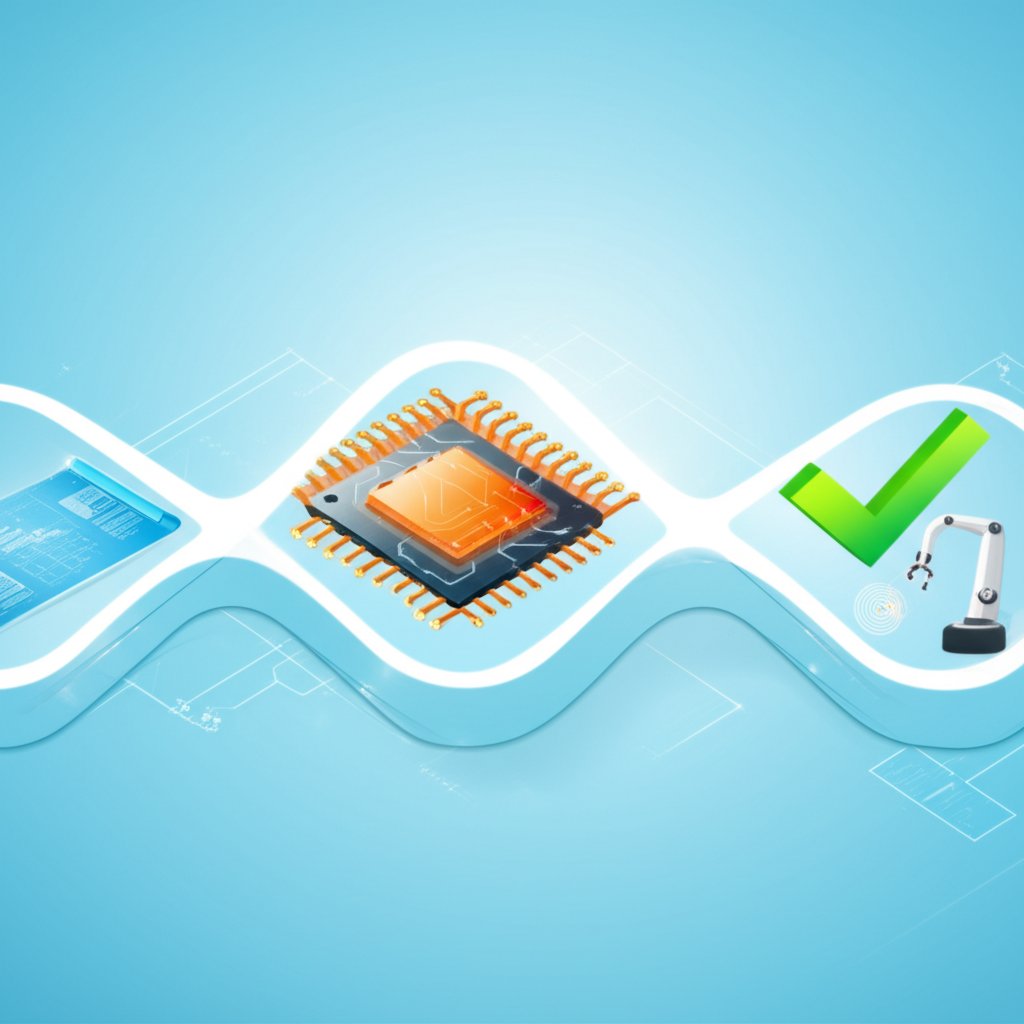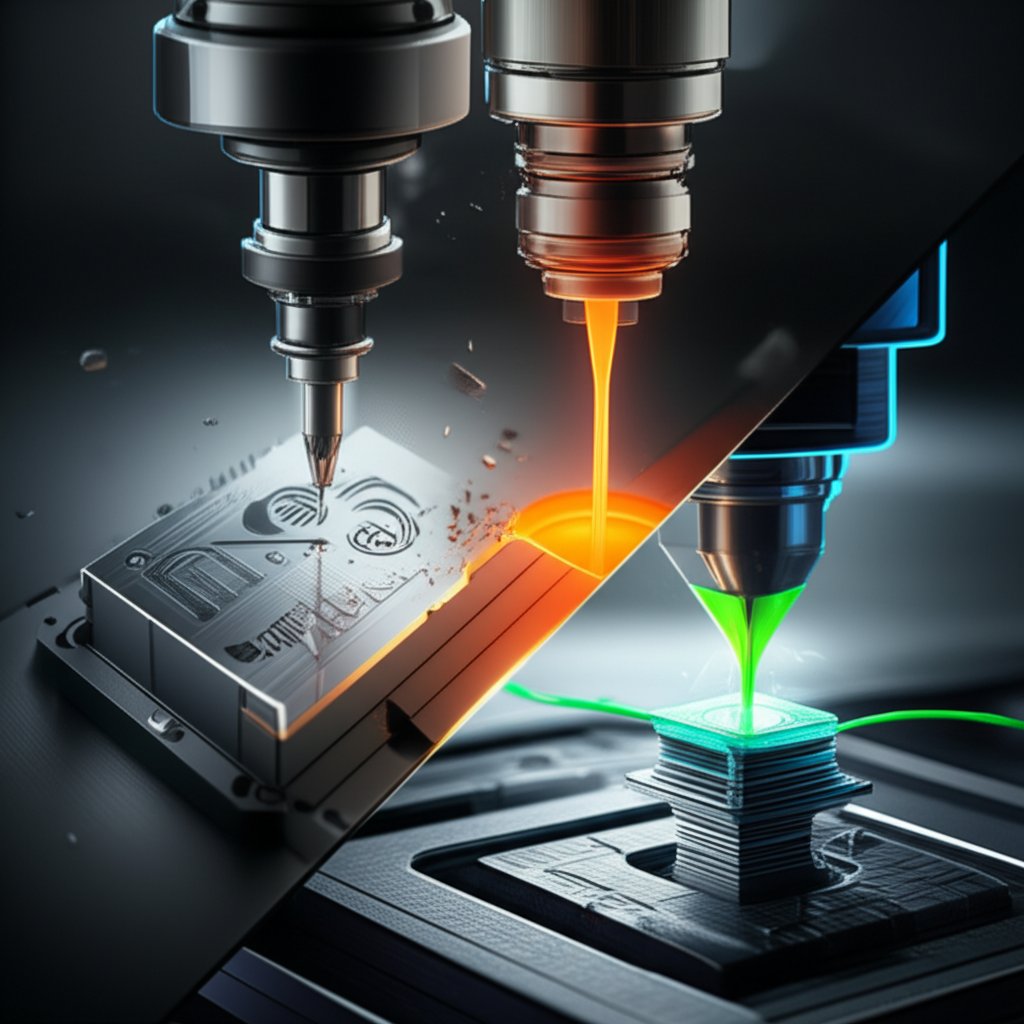Electronics Component Fabrication: Key Processes Explained

TL;DR
Electronics component fabrication is the comprehensive process of designing, manufacturing, and assembling individual electronic parts like resistors, capacitors, and integrated circuits onto a Printed Circuit Board (PCB). This multi-stage journey transforms a design concept into a functional product. Key phases include PCB fabrication, component sourcing, assembly using methods like Surface Mount Technology (SMT), and rigorous quality assurance testing.
The Foundation: Understanding Basic Electronic Components
Before diving into the complex world of manufacturing, it's essential to understand the fundamental building blocks of any electronic device. These components are broadly categorized into passive and active devices based on their function. A solid grasp of these basics is crucial for anyone involved in electronics component fabrication, from designers to technicians.
Passive components do not require an external power source to operate and include resistors, capacitors, and inductors. Resistors are used to limit the flow of electric current, capacitors store and release electrical energy, and inductors store energy in a magnetic field. As detailed in a comprehensive overview of basic components, these parts are fundamental to controlling voltage, current, and signal filtering in a circuit. They come in various standardized packages for both through-hole and surface-mount applications.
Active components, on the other hand, rely on an external power source to function and can amplify or process electrical signals. This category includes diodes, transistors, and integrated circuits (ICs). Diodes allow current to flow in only one direction, while transistors can act as both switches and amplifiers. Integrated circuits are the brains of modern electronics, containing millions or even billions of miniaturized transistors and other components on a single microchip to perform complex tasks.
The End-to-End Electronics Manufacturing Process
Bringing an electronic product to life is a sequential, multi-stage process that requires precision, planning, and expertise. The journey from a simple idea to a market-ready device involves several critical phases, each with its own set of challenges and quality checkpoints. This structured approach ensures that the final product is not only functional but also reliable and manufacturable at scale.
The entire lifecycle can be broken down into the following key stages:
- Design and Prototyping: The process begins with a schematic design, where engineers map out the circuitry using computer-aided design (CAD) software. This is followed by prototyping to test and refine the concept. A critical part of this stage is Design for Manufacturability (DFM), which optimizes the design to prevent problems during fabrication and assembly.
- Component Sourcing: Once the design is finalized, all necessary components—from resistors and ICs to connectors—are sourced from various suppliers. Managing this supply chain is vital to avoid delays and ensure component quality.
- PCB Fabrication and Assembly: The bare Printed Circuit Board (PCB) is manufactured, and then components are mounted onto it, typically using Surface Mount Technology (SMT).
- Testing and Quality Control: The assembled board undergoes rigorous testing to verify its functionality and identify any defects.
- Box Build Assembly: The tested PCB assembly (PCBA) is integrated into its final enclosure, along with any other necessary parts like displays, buttons, or wiring harnesses.
- Final Testing and Packaging: The complete product undergoes a final functional test before being packaged for shipment.
For companies looking to streamline the initial phases, partnering with a specialized service provider can be highly beneficial. For instance, businesses can accelerate product development with XTJ's comprehensive formative manufacturing services, which offer rapid prototyping and expert DFM feedback. Outsourcing manufacturing to an Electronics Manufacturing Services (EMS) provider is another common strategy that allows companies to leverage specialized expertise and economies of scale without investing in their own production facilities.

Core Fabrication Techniques: From PCBs to Enclosures
The physical creation of electronic hardware relies on a diverse set of fabrication techniques, each suited for different materials and purposes. The most central of these is Printed Circuit Board (PCB) fabrication, which creates the backbone of the device. However, manufacturing a complete product also involves creating enclosures, brackets, and other mechanical parts using various advanced methods.
PCB fabrication is a complex process of layering conductive and insulating materials to create the circuitry. As outlined in Viasion's guide to the electronics manufacturing process, key steps include transferring the circuit design onto copper-clad laminates, etching away unwanted copper to form traces, drilling holes (vias) to connect layers, and applying a protective solder mask. This process turns a digital design file into a physical board ready for component assembly.
Beyond the PCB, other techniques are used to create the rest of the product's hardware. These methods are chosen based on material, production volume, and complexity. For example, plastic casings are often made using injection molding for high-volume production, while metal enclosures might be created with CNC machining for precision or sheet metal fabrication for durability. 3D printing is invaluable for rapid prototyping of custom parts like brackets and housings.
| Fabrication Method | Primary Materials | Best Use Case | Strengths | Weaknesses |
|---|---|---|---|---|
| PCB Fabrication | FR-4, Copper, Solder Mask | Creating the main circuit board | High-density, reliable connections | Complex, multi-step process |
| CNC Machining | Aluminum, Steel, Plastics | High-precision metal enclosures, heat sinks | Excellent precision, complex geometries | Slower and more expensive for high volumes |
| Injection Molding | ABS, Polycarbonate, PP | High-volume plastic casings, keypads | Cost-effective at scale, high repeatability | High initial tooling cost |
| 3D Printing | Plastics (PLA, ABS), Resins | Rapid prototyping, custom low-volume parts | Fast, no tooling required, complex shapes | Limited material strength, slower for mass production |
Quality Assurance: Assembly, Inspection, and Testing
Once the bare PCB is fabricated and components are sourced, the next critical stage is assembly, followed by rigorous inspection and testing to ensure the final product works correctly and reliably. This quality assurance phase is non-negotiable, as even a tiny defect, like a misplaced component or a poor solder joint, can lead to complete product failure.
The most common assembly method today is Surface Mount Technology (SMT), where components are placed directly onto the surface of the PCB. The SMT process involves three main steps: applying solder paste to the board, using a pick-and-place machine to precisely position the components, and passing the board through a reflow oven to melt the solder and create permanent connections. This automated process is highly efficient for mass production.
After assembly, the boards are thoroughly inspected for defects. Automated Optical Inspection (AOI) uses cameras to scan the board and compare it to a perfect reference image, quickly identifying issues like missing components or incorrect placement. For components like Ball Grid Arrays (BGAs) where solder joints are hidden underneath the chip, X-ray inspection is used to see through the component and check for voids or shorts. These inspection steps catch manufacturing flaws before the product moves to functional testing.
Finally, the assembled boards undergo electrical testing to confirm they function as designed. Common methods include:
- In-Circuit Testing (ICT): Best for mass production, this method uses a fixture of probes to check each individual component and circuit node for shorts, opens, and correct values.
- Flying Probe Testing: Ideal for prototypes and small batches, this fixtureless method uses robotic probes to move around the board and test points, offering flexibility without the high cost of a custom fixture.
- Functional Testing: This test simulates the product's actual operating environment, powering it up and verifying its overall performance to provide a final pass/fail verdict.

Frequently Asked Questions
1. What is EMS and SMT?
EMS stands for Electronics Manufacturing Services. It refers to companies that design, manufacture, test, and repair electronic components and assemblies for other companies, known as Original Equipment Manufacturers (OEMs). SMT, or Surface Mount Technology, is the primary method used in EMS for soldering components directly onto the surface of a printed circuit board (PCB).
2. What is the fabrication of components?
In the context of electronics, the fabrication of components refers to the entire process of creating the individual parts and the final assembled product. This includes manufacturing the bare printed circuit board (PCB), sourcing or creating components like ICs and resistors, assembling these parts onto the board, and producing mechanical elements like enclosures through methods such as injection molding or CNC machining.
3. What is an electronic component manufacturer?
An electronic component manufacturer is a company that specializes in the design, production, and testing of electronic products for other companies. Also known as an Electronics Manufacturing Services (EMS) provider or an Electronics Contract Manufacturer (ECM), these firms handle the complex supply chain and manufacturing logistics, allowing the original brand to focus on research, development, and marketing. Details on this business model can be found on platforms like Wikipedia.
-
Posted in
component assembly, electronic components, electronics manufacturing, pcb fabrication, surface mount technology





